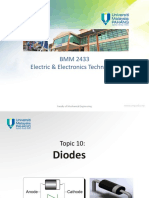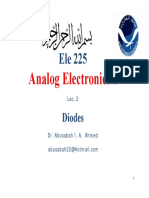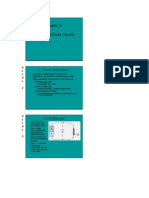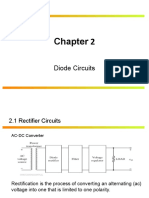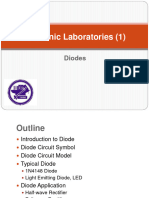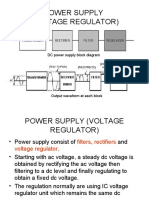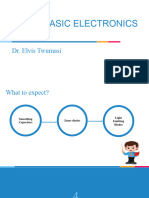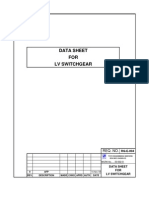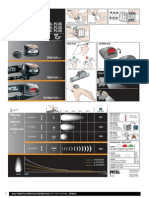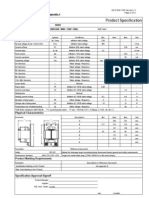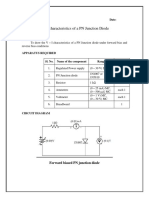0% found this document useful (0 votes)
39 views35 pagesECE 101 Lecture5
The document discusses various applications and types of diodes, focusing on rectifiers that convert AC to DC power. It explains half-wave and full-wave rectifiers, including their designs and operational principles, as well as the use of filter capacitors to stabilize output. Additionally, it covers special diode types such as LEDs, photodiodes, Schottky diodes, Zener diodes, and varactor diodes, highlighting their characteristics and applications.
Uploaded by
adityak1Copyright
© © All Rights Reserved
We take content rights seriously. If you suspect this is your content, claim it here.
Available Formats
Download as PDF, TXT or read online on Scribd
0% found this document useful (0 votes)
39 views35 pagesECE 101 Lecture5
The document discusses various applications and types of diodes, focusing on rectifiers that convert AC to DC power. It explains half-wave and full-wave rectifiers, including their designs and operational principles, as well as the use of filter capacitors to stabilize output. Additionally, it covers special diode types such as LEDs, photodiodes, Schottky diodes, Zener diodes, and varactor diodes, highlighting their characteristics and applications.
Uploaded by
adityak1Copyright
© © All Rights Reserved
We take content rights seriously. If you suspect this is your content, claim it here.
Available Formats
Download as PDF, TXT or read online on Scribd
/ 35

